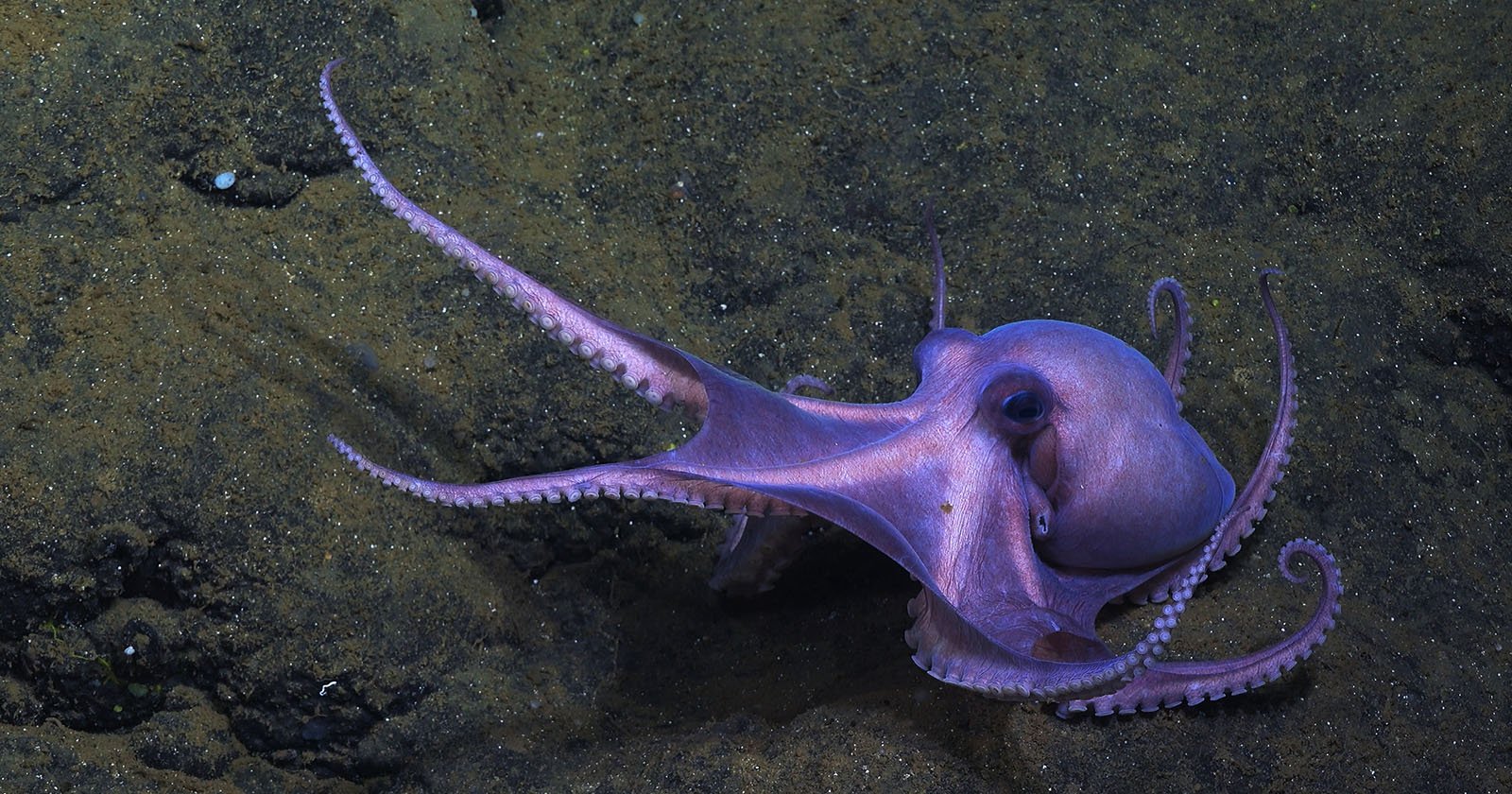
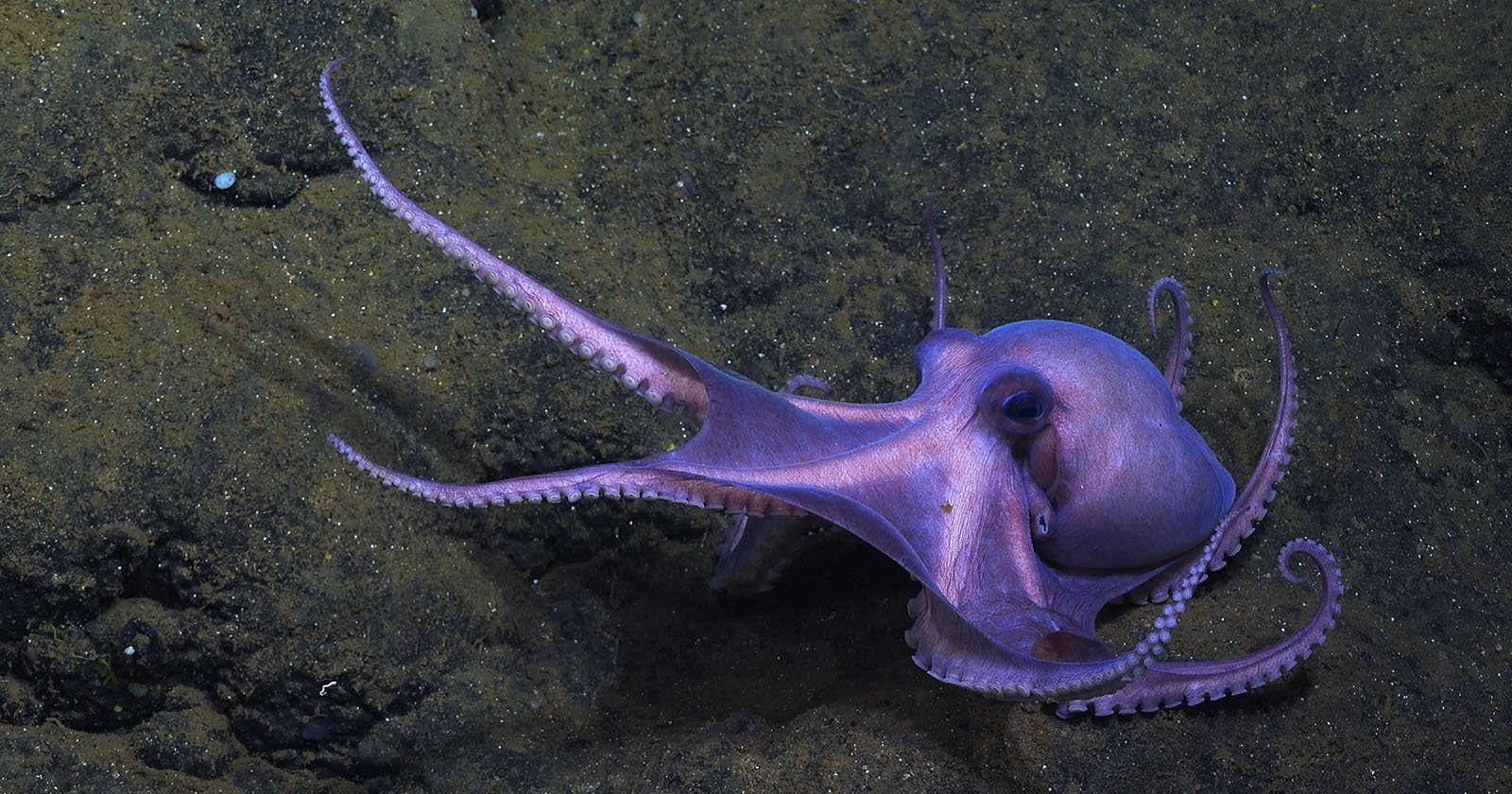
Roughly 300 species of octopus live in the world’s oceans. These creatures embody many traits that people consider particularly human, including remarkable intelligence and rich social lives, while occupying a physical form so different from us that they seem almost alien.
Our Home, National Geographic’s Emmy Award-winning nature documentary series, is returning to televisions worldwide to take an up-close-and-personal look at octopuses. Secrets of the Octopus, premiering today, April 21, on Hulu and Disney+, shows octopuses incredible physical abilities, their remarkable mental gifts, and the diverse ways octopuses interact with each other and the world around them.
In preparation for the new series, PetaPixel chatted with Dr. Alex Schnell, a National Geographic Explorer and the lead storyteller and producer of Secrets of the Octopus, and series director of photography, Adam Geiger. Topics include what makes octopuses so special and what makes the incredible animals a joy and challenge to film.
![]()
Octopuses Are Alien, Bizarre, and Incredible
“Octopuses are creatures so bizarre they could star in their own sci-fi series — with bodies devoid of bones, three hearts that pump blue blood, and skin that shifts shape and color at their whim. Yet, within this framework of strangeness, they showcase a brilliance in problem-solving and memory that beckons us to rethink the nature of intelligence,” says Dr. Schnell. “They are the perfect balance between alien and familiar. Since they have taken such a different evolutionary path to humans, they offer a really important piece of the puzzle — octopuses are excellent candidates to answer questions about how intelligence evolved, when and why.”
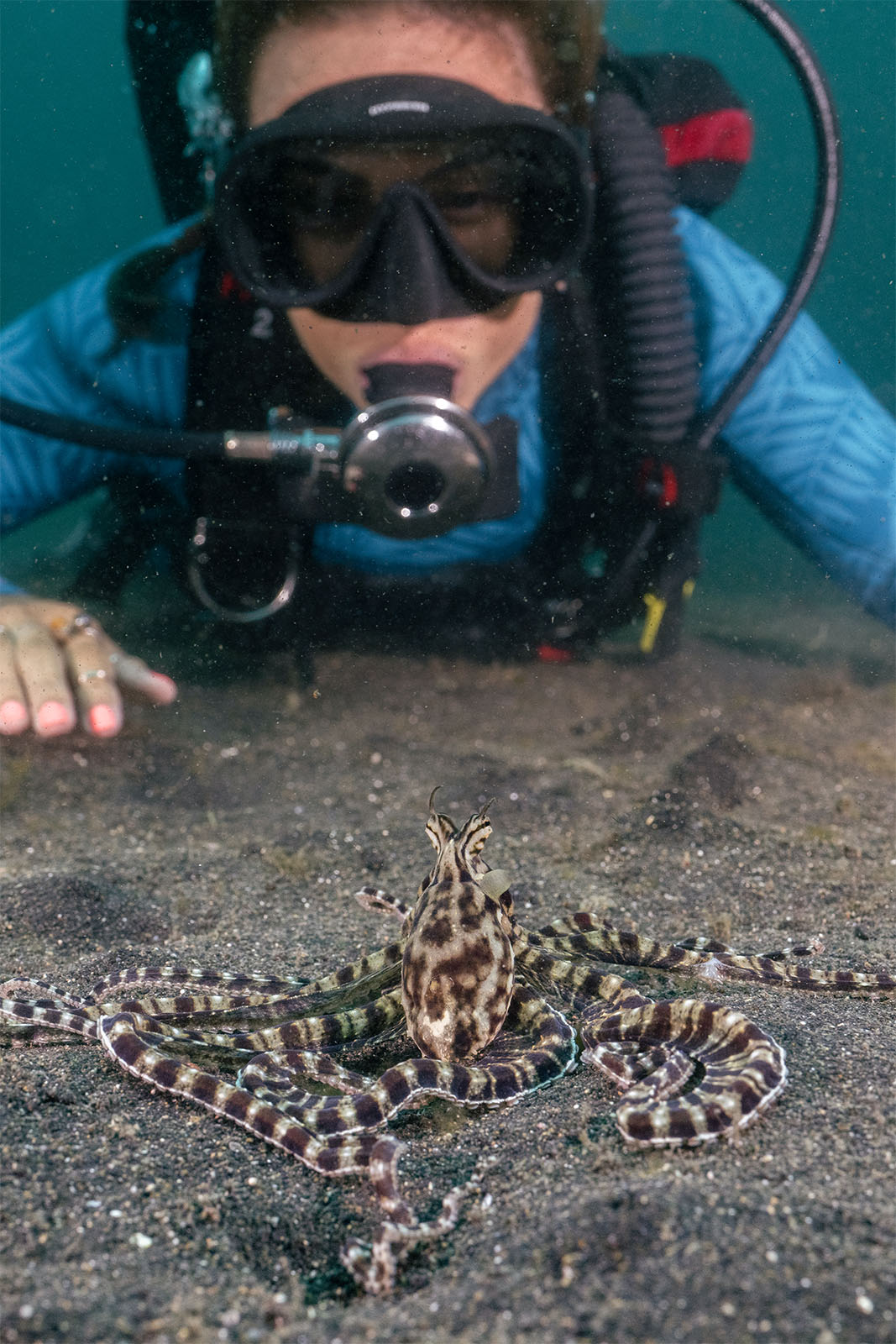
However, the same things that make octopuses so exciting and incredible to watch also make them challenging to understand. Dr. Schnell has spent her career studying creatures, including octopuses, to appreciate their neurology and conscious existence.
“Octopuses are so unique and diverged from the human lineage over 550 million years ago. My research endeavors to uncover the inner workings of their minds — how they experience their world, what they can learn, and what can they remember. Exploring these types of questions has revealed unexpected details about these critters.”
They’re More Like Us Than We Thought
“My research has revealed that octopuses are more similar to us than we once thought. The more I reveal about their minds, the more compassion we can feel.”
This message underlies what makes Secrets of the Octopus so important and potentially beneficial. Octopuses, like all the ocean’s creatures, are under threat. If people can connect with an animal, they are more likely to care about its well-being and take action to help improve things.
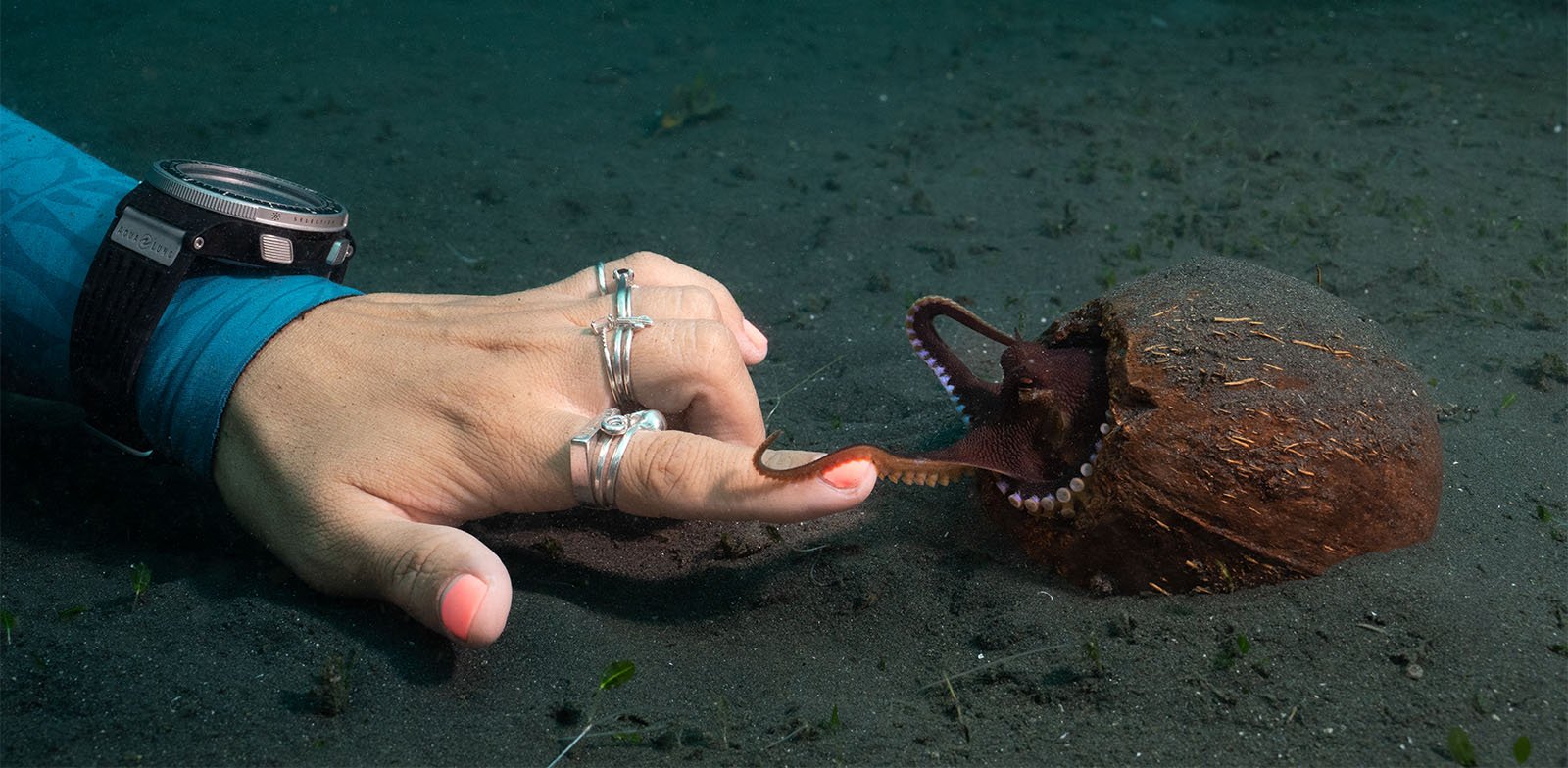
“The more compassion we feel, the more we desire to protect these magical critters and their fragile ecosystems,” adds Schnell.
Although Dr. Schnell has spent considerable time and energy working to understand octopuses, Secrets of the Octopus posed unique challenges as it’s the first time she has ever appeared on camera. She says it was a “steep learning curve.”
“Despite the initial challenges, I truly loved the experience. It made me realize the importance of not only publishing scientific findings in peer-reviewed journals but also of crafting those findings in engaging narratives.”
Incredible Moments with Octopuses
During dives, Dr. Schnell is frequently “moved and surprised” by the speed with which octopuses can trust divers. One such octopus, Scarlet, a day octopus featured in the new show, reached out to touch Dr. Schnell’s hand after just half an hour.
“Each time I returned, she appeared to recognize me quickly and let me back into her world, letting me swim alongside her as she hunts.”

“This might not sound like much, but imagine being a creature with no skeleton, no shell, no teeth, and no claws to protect yourself, and despite this immense vulnerability, you let your guard down to trust an alien creature (me) that’s ten times your size!”
The Inner Lives of Cephalopods
Given Dr. Schnell’s academic work on non-human consciousness, I couldn’t pass up the chance to chat about philosopher Thomas Nagel’s famous paper, What Is It Like to Be a Bat?.
“I love that paper,” Schnell remarks. “I mention Nagel’s work in a recent paper I wrote called The Inner Lives of Cephalopods.”
“Nagel argues that imagining the inner experience of a bat is complicated, if not impossible, especially when your reference point is the human body equipped with a human mind. In the same vein, imagining the inner lives of cephalopods seems like an unfeasible task given how radically different they are from us. Cephalopods are soft-bodied, with no skeleton, a beak for a mouth, three hearts, eight flexible arms, and a donut-shaped brain that wraps around their esophagus. How does one step into the subjective life of an octopus and apply our imagination to theirs? In the attached paper, I discuss the idea of cephalopod consciousness in three different categories: awareness of self, awareness of others, and awareness of time. While we might not ever know what it is truly like to be an octopus, the application of these psychological paradigms offers a window intro the cephalopod mind, adapting non-invasive avenues to try and understand their world from their point of view.”
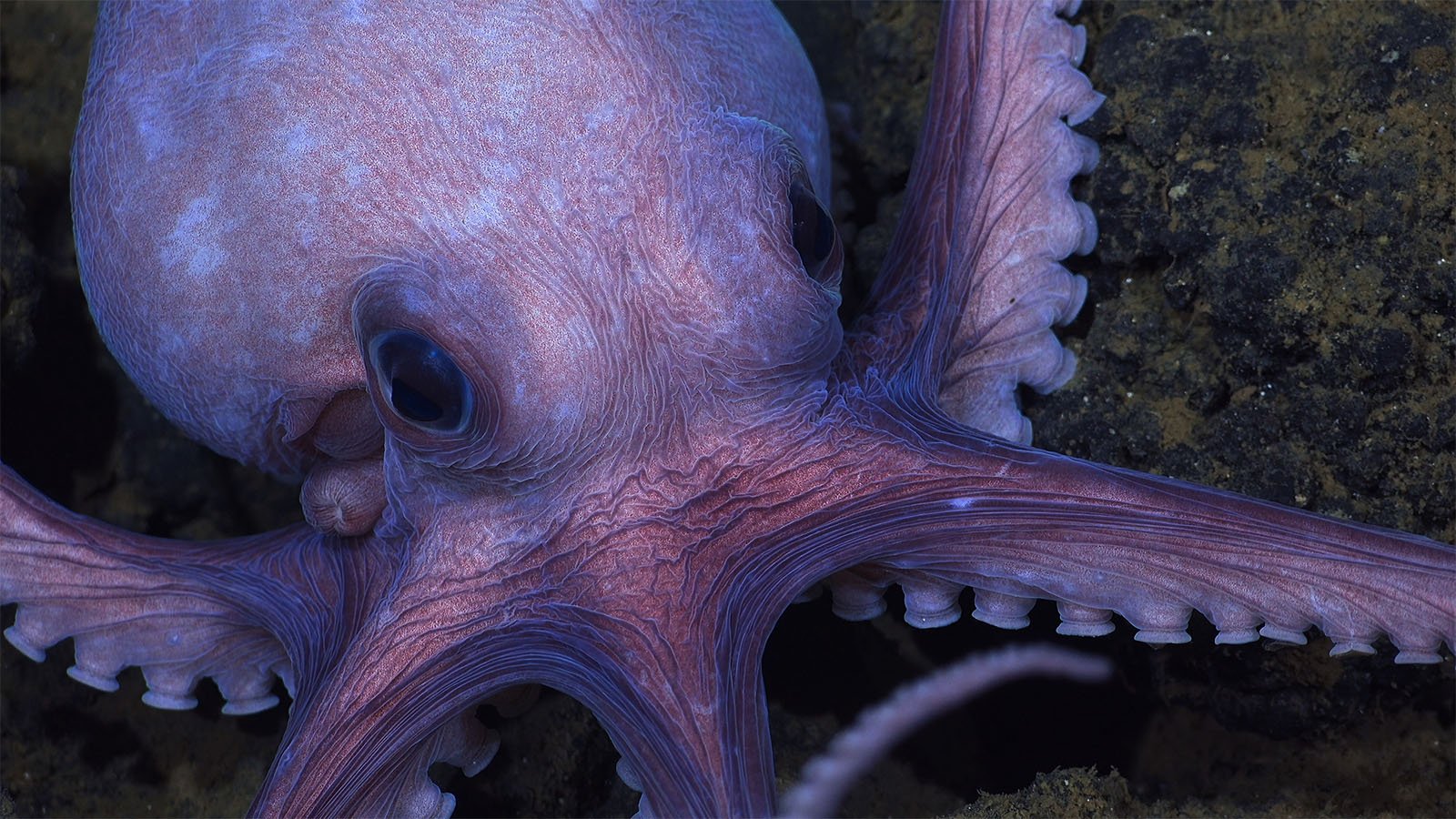
It’s an incredible — and accessible — paper. It is well worth reading. It also aims to establish a framework in which it will be possible to, if not understand, at least begin to grasp the lives of cephalopods. While we arguably will never know what it is truly like to be an octopus, we can improve how we think about their cognition and, more importantly, appreciate and respect it. After all, “different” is not worse or lesser.
Filming Underwater Is Hard… Filming Octopuses Is Even More Challenging
While Dr. Schnell tackles the scientific and philosophical side of things for Secrets of the Octopus, and does considerable in-the-field research during the show, Adam Geiger runs things camera-side. As one can imagine, underwater cinematography differs significantly from filming on land.
“Underwater cinematography has unique challenges. Conditions are constantly changing; tides and currents, water temperature, weather events, even clouds in the sky. These things combine to give the water an overall color that changes day to day. Particles in the water diffuse light and limit how far you can see, from 100 feet in clear water, down to little more than just in front of your face. You have to get close to your subject for a crisp image and add light to bring out color and contrast,” Geiger explains.
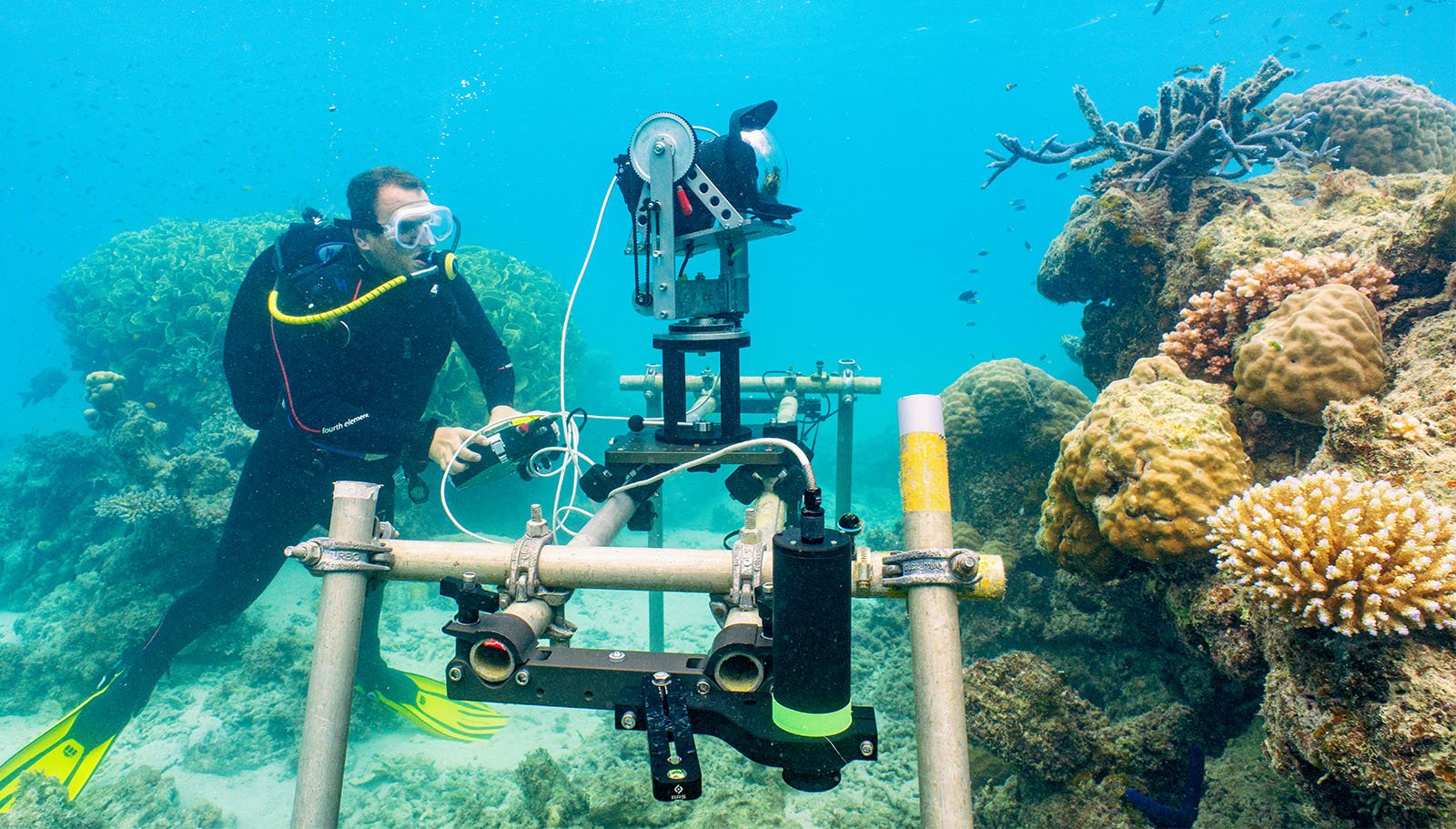
“And even on the same dive, changing the camera angle can result in a very different look. Filming different octopus species around the world meant following them along complex coral reefs, rocky kelp forests and flat, barren plains, so much of our work means hand-holding the camera — a challenge to keep the image steady, framed, and in focus. And being a diver comfortable with their buoyancy, gear and safety precedes any camera work. Filming underwater requires the experience to understand all these factors and adapt with every shot.”
Finding Octopuses Is Complicate By Their Camouflage Skills
As tricky as shooting underwater is, filming octopuses significantly ramps up the challenge. Octopuses are extremely good at hiding in plain sight. They are also clever and very cautious. Geiger mentions that some octopuses have been known to hide in their den and wait until they see a diver, who must surface for a fresh oxygen tank before coming out.
The team behind Secrets of the Octopus had first to locate their subject, then spend enough time around them to be trusted, and then wait for the creatures to behave naturally while being observed.
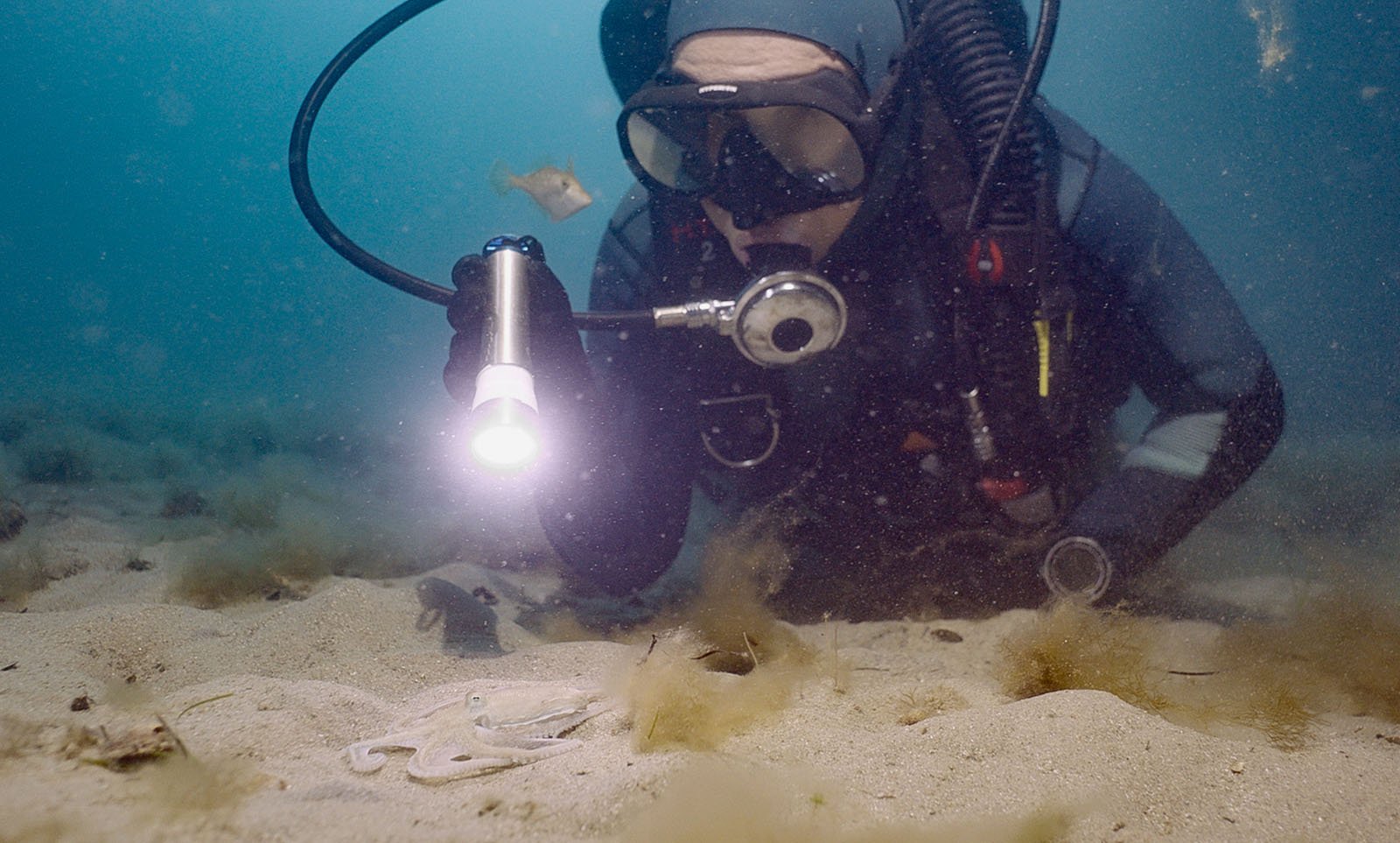
“So, we set out to do what no one has before: spend hours, days and weeks with individual octopus so they would allow us into their world. In most locations, that meant using specialized Closed Circuit Rebreather diving technology that gave us up to four-and-a-half hours underwater per dive — when an average scuba dive usually only lasts 40 minutes,” Geiger explains.
Many octopuses are pretty small, about the size of a football, so filming them poses compositional challenges. They also move fast, in any direction at any given time, so filling the frame with an octopus is quite challenging.
Diverse Camera Gear
As for the gear used to create the show, Geiger says his team used RED 8, Sony 4K, and ZCam 6K cameras. All footage was shot in RAW formats to ensure flexibility during post-production. Geiger mentions that many lenses were used, including wide-angle 16-35mm and 28-60mm zooms.
“A 24mm wide-angle close-focus probe lens lets us bring the viewer down into the world of the octopus,” Geiger says.
He also used Canon and Nikon 24-70mm f/2.8 zoom lenses, a Nikon Macro 70-180mm DSLR zoom, and some 60-year-old Nikonos 15 and 20mm water-contact lenses.
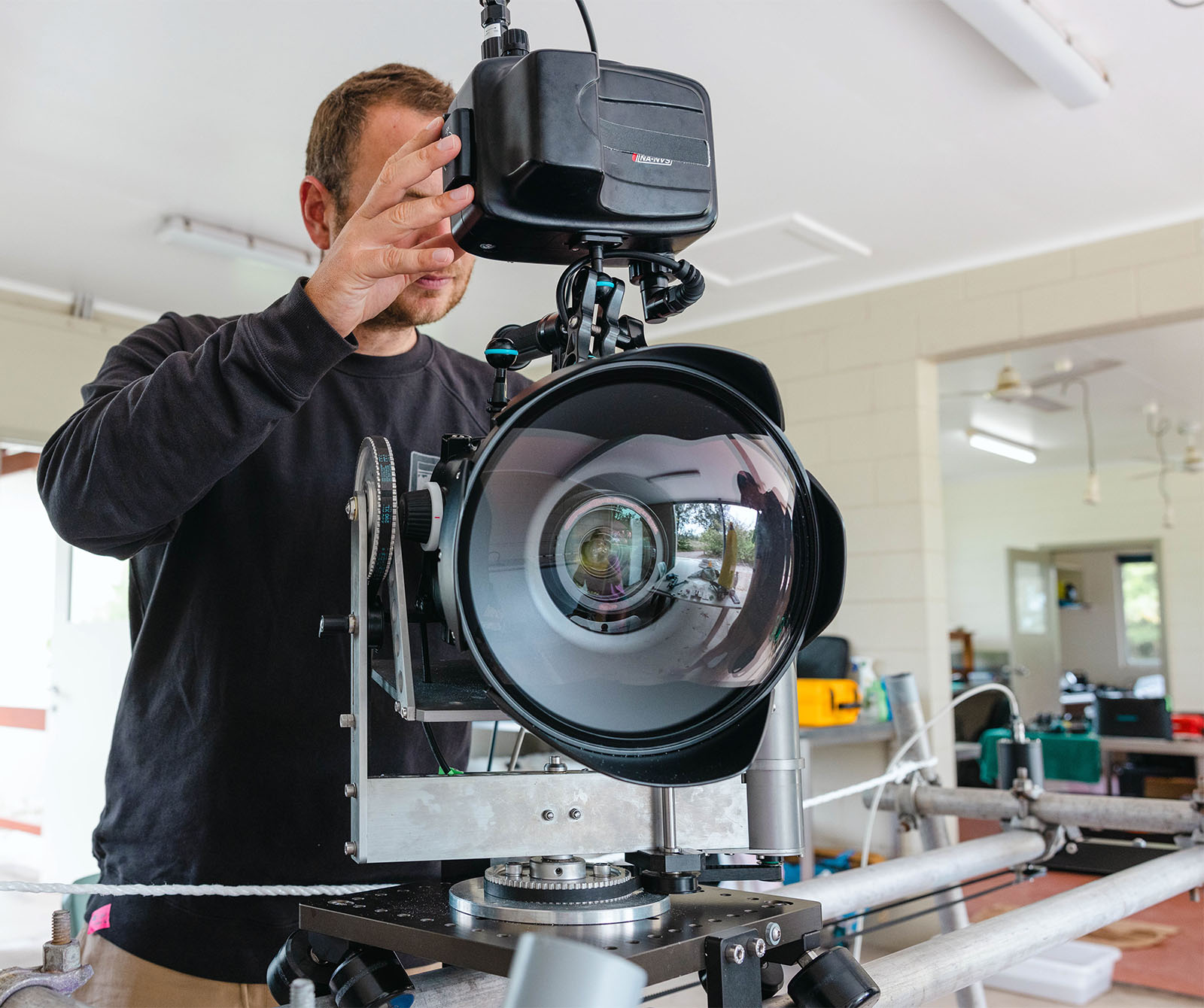
“These are some of my favorite,” Geiger says of the Nikonos lenses.
“Wide-angle lenses established the world of the octopus, but longer focal lengths, with shallow depth of field, created an intimate mood, and helps the audience connect with our octopus characters. Specialty probe lenses, sliders and jib arms make us feel part of the action, immersed in the octopus’ world. All together, our storytelling, we hope, reveals a thinking, emotional creature.”
“Octopus are about as alien a creature as we can imagine. No bones, eight arms, never the same shape or color for long, and often invisible! The challenge for me and my talented camera team was to create an intimate connection between the viewer and each octopuses… revealing their intelligence, emotion and remarkable abilities through individual stories across eight different species from around the world.”
Falling in Love With Octopuses
Both Schnell and Geiger hope that viewers will learn more about octopuses from the new series and fall in love with the creatures as they did.
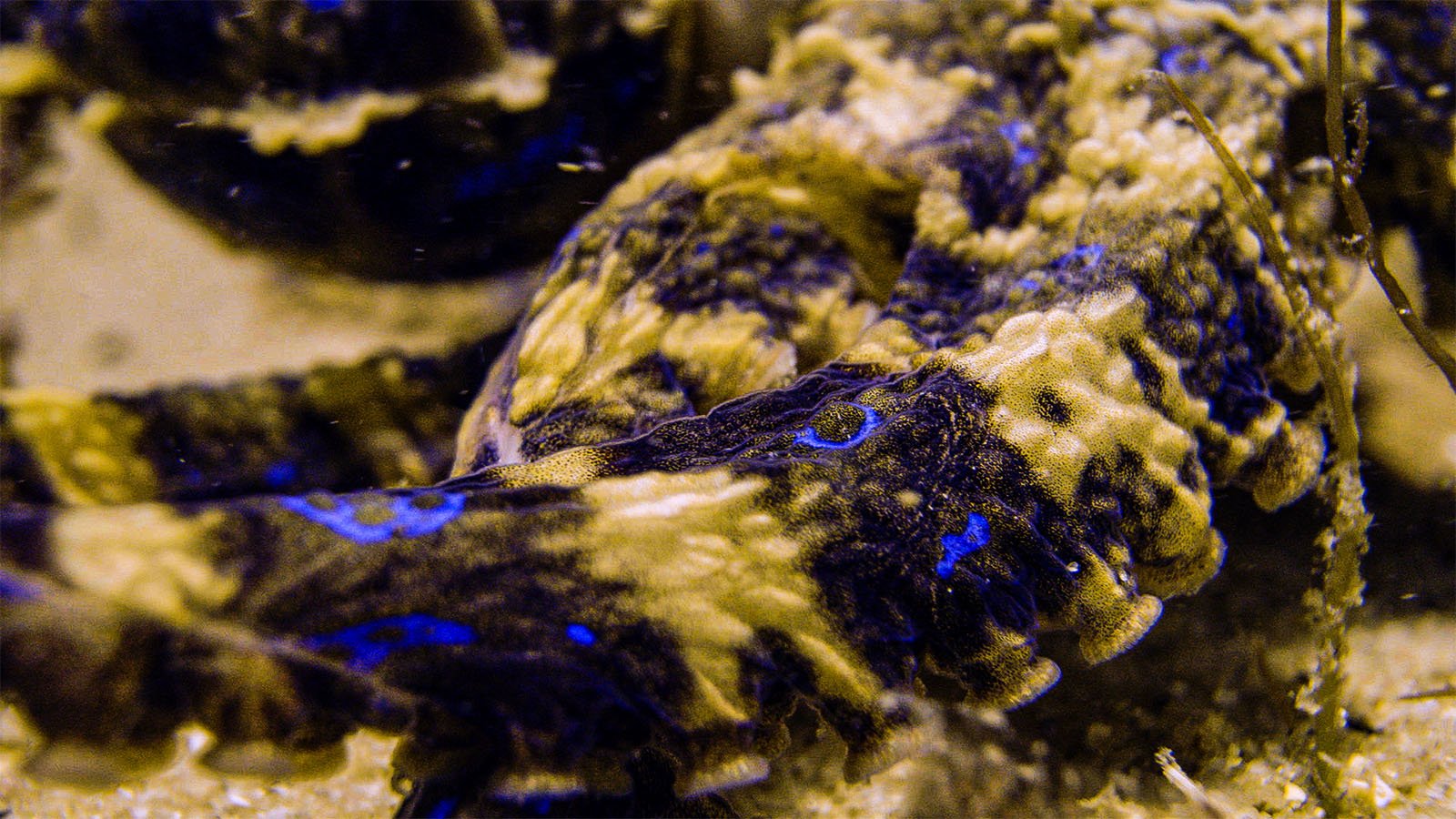
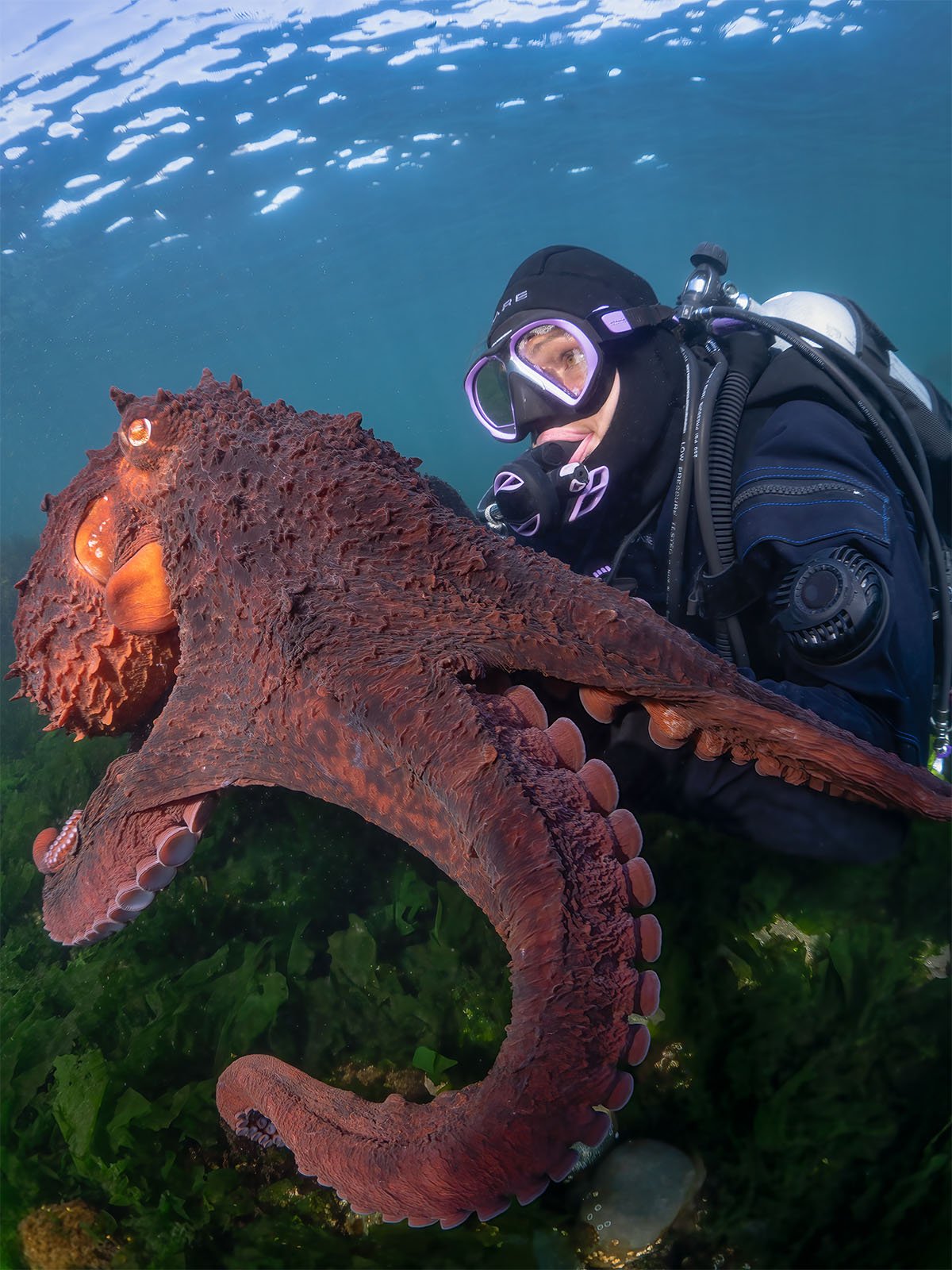
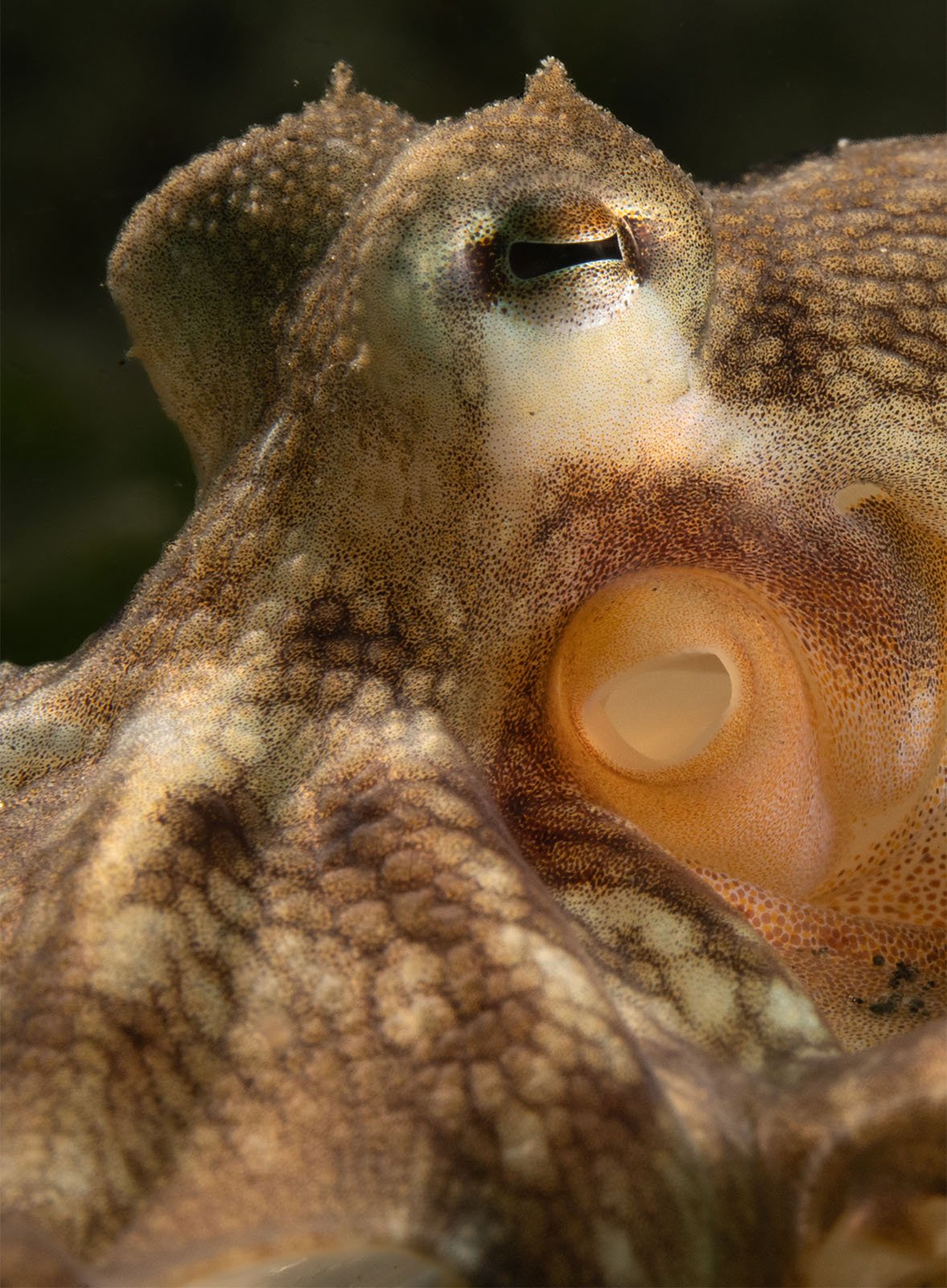
“Humans are destroying nature as fast as humanly possible. But what you love, you will protect — and octopus are a perfect ambassador for the oceans — the heart and lungs of Earth. I hope a charismatic octopus can make us think more about what we can do every day to help save our planet,” Geiger explains.
Where to Watch
Secrets of the Octopus premieres on National Geographic today, April 21, at 8 PM ET. All episodes will begin streaming on Disney+ and Hulu starting tomorrow, April 22. The series is narrated by famous Hollywood actor Paul Rudd.
Image credits: National Geographic






